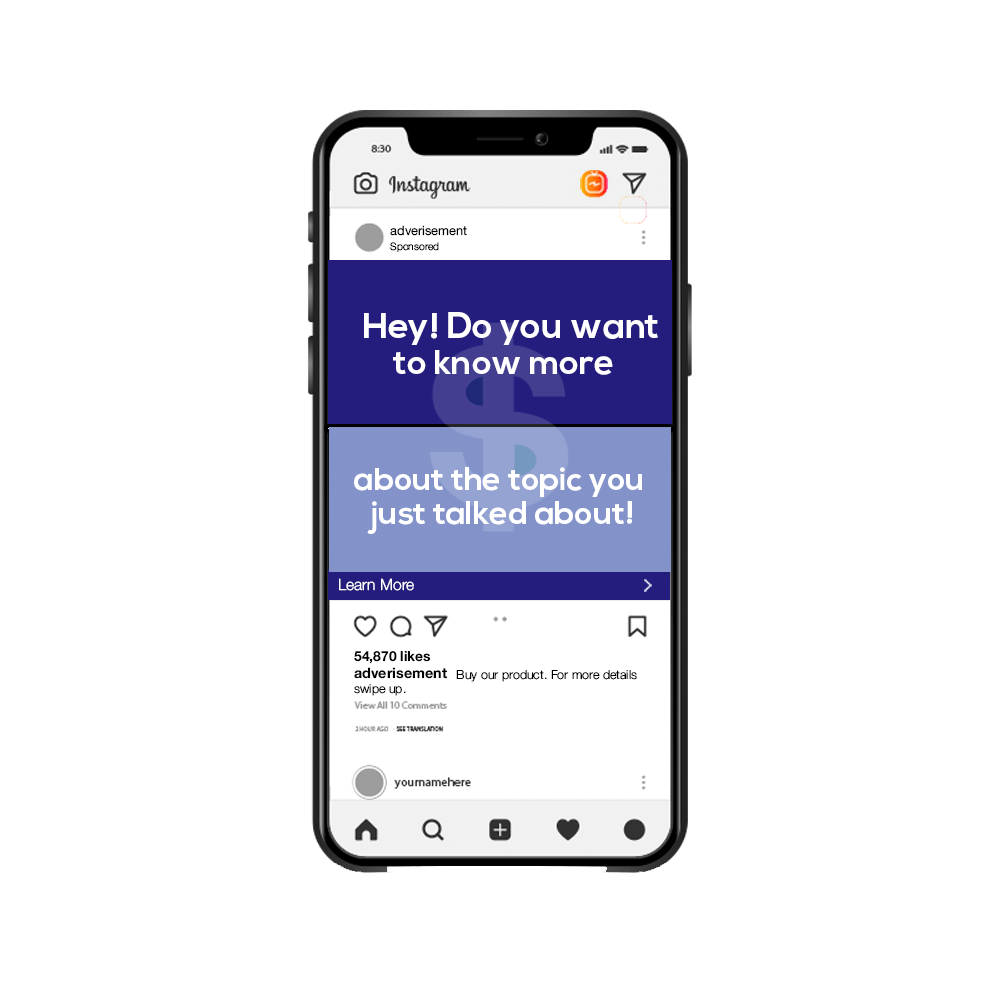
The first link on a Google search, the start of a YouTube video, the next story on Instagram, What do they all have in common? – Advertisements.
Bitcoin may be the digital currency, but advertisements make the digital economy. Major companies that appear to provide their products free of cost. However, they too work on an advertisement-based business model. Even in our daily lives, most of the services that we use, such as social media (Facebook, Twitter, Instagram), music streaming services (Spotify, Gaana, Saavn), and YouTube, depend on ads to generate revenue.
There was a time when ads on the internet were all but simple banners on a webpage; something your eyes got accustomed to ignoring over time. The clicks per ad view for these banner ads thus dropped to below 0.17%, which caused companies working on an advertisement based business model to face huge losses. Hence, they developed new advertisement techniques to make these ads more effective.
For instance, over time, Google has made YouTube’s advertisements go from completely skippable to ‘skip after 5 seconds’, and at present, even non-skippable ads.
How do Advertisements Work?
Advertising can work in many ways. An advertiser may choose to pay search engines and websites to display links and banners online. They then pay them for each click or each view, depending on the model followed.
Streaming services like Spotify and YouTube may play ads between songs and videos. For YouTube, the frequency of advertisements is decided by the content creator. In the case of streaming services, a part of the revenue generated per ad view is given to the content creators, which finances the creators and allows the content to remain free to watch.
Spotify is also known to self advertise wherein it may play ads that advertise its own ad-free premium service instead of third-party ads.
Machine learning and neural networks also play a significant part in deciding what to advertise to a user. These curate ads to a specific individual by using cookies and data collected from partner company websites and services. They also decide how often ads should be played to maintain a balance between content and advertisements so that the users do not feel pestered by excessive advertisements.
Machine learning also helps in predicting and boosting ad performance by optimising content for variables like geolocation, time of day, device, targeted audience, among others. It can provide suggestions based on the performance of previous advertising campaigns.
ML can only get better with time — as the number of user interactions increases, so does the reliability of the algorithm. Machine Learning has the ability to learn from and predict the user’s taste profile. This means that ML can use the users’ online behaviour as a basis for decision making in future scenarios.
Advertisement Blocking
The first question that might pop up in your mind is: Is it advertisement blocking legal?
Well, the answer is both yes and no. While blocking elements of a webpage or service that appear on the screen is entirely legal, interfering or modifying with advertisement playing element’s code is illegal.
For example, adblocker extensions of web browsers block banners on webpages from displaying content, which is entirely legal. On the other hand, some apps like Adaway can be used on rooted devices to modify app packages, delete and modify system files. These programs block in-app ads by changing publisher code and are thus illegal as they violate the terms and conditions of use. YouTube Vanced, another application available online, is an app for android devices and is, basically, YouTube without advertisements. Since it modifies the app’s code while rendering videos to skip ads, it also falls under the realm of illegality.
The alternative to blocking ads on social media and streaming services is to buy their premium subscriptions which automatically remove ads and also provides other useful features.
Ad blockers, in one way or another, can block almost all forms of advertisement except native advertising.
What is Native Advertising?
Native advertising, in simple terms, is advertisement camouflaging. It is currently the most effective form of advertising and is the advertising industry’s response to adblockers. The advertised product or service is integrated into the plot point of an article or web series, which makes it difficult to block these types of advertisements. Before you know it, you have been advertised.
Have you ever watched a web series in which the actors suddenly start talking about an app that helps in car rentals, furniture renting or cab booking?
Alternatively, when you are watching your favourite Youtubers or browsing a celebrity’s Instagram, they might advertise certain products. These are examples of native advertising.
The fastest form of advertising is memes, which is a tried and tested way of advertising; The basic formula is to take a meme format that is currently trending, link it to your company’s product or service and use the appropriate hashtags to spread it on social media.
Netflix is known to use this format. For example, when new seasons of Narcos and Orange Is the New Black were about to be released, Netflix sponsored various news articles in US newspapers about drug cartels and female prisons, respectively. Even though the articles and reports were well researched, the advertisement had been snuck into them, killing their authentic vibe.
Will advertising creep completely into our daily life or will people end up paying a premium for an advertisement free experience? Only time will tell.
Written by Harshaj Sood for MTTN
Edited by Naintara Singh and Rahul Alvares
Featured Image and graphics by Vishwas Dave


Leave a Reply
You must be logged in to post a comment.